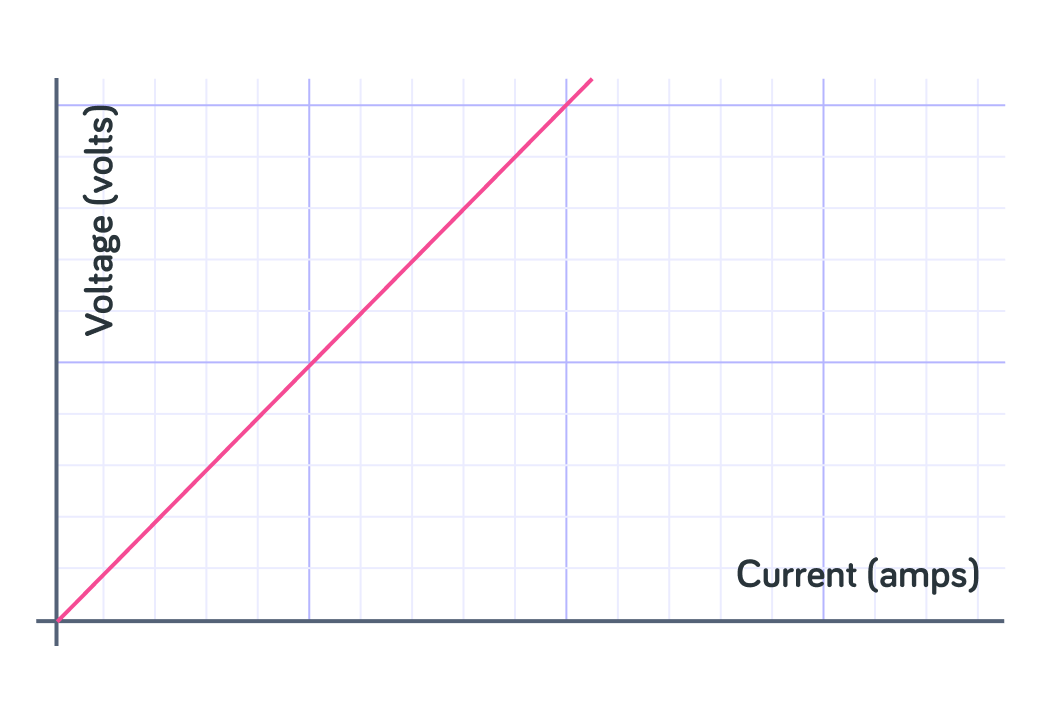YOU ARE LEARNING:
V = IR

V = IR
We can calculate the current, resistance and voltage using the equation V = I x R.
Which letter do we use to represent the voltage in a circuit?

Which letter do you think we use to represent the resistance in the circuit?

Which of the following letters do we use to represent the current in a circuit?

A circuit has a current of 2, a voltage of 10 and a resistance which equals 5. Which of these is correct formula for calculating resistance?

How can we rearrange the formula R=IV to make V the subject?

The image shows how we can calculate the voltage, resistance and current in a circuit and how they are related to each other.
You place your thumb over the one you want to find and the rest of the triangle shows what should be multiplied by what, or what should be divided by what.

Do you think the resistance in all types of resistors is constant, or can resistance vary?

Whilst normal resistors have a constant resistance, there is a type of resistor where we can change the resistance. We call them variable resistors. We can change the resistance in them and calculate the change in current.
Imagine that we plot a graph of voltage, V, against current, I. What would the slope of the line show?

This graph shows the voltage plotted agaisnt the current for a circuit. What does the gradient or slope of the line represent?


This graph shows the voltage and current for a circuit.
The gradient of the line is the resistance. Remember that we find resistance by dividing voltage (on the y-axis) by current (on the x-axis) like this: R=IV

Is the slope of the line constant or changing?


What can we say about the relationship between the voltage and the current?
A) They are inversely proportional. B) They are directly proportional.
Answer A or B.


